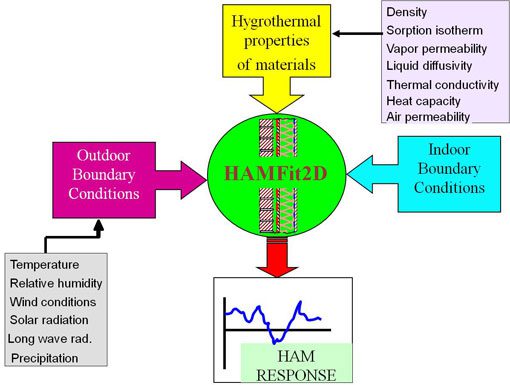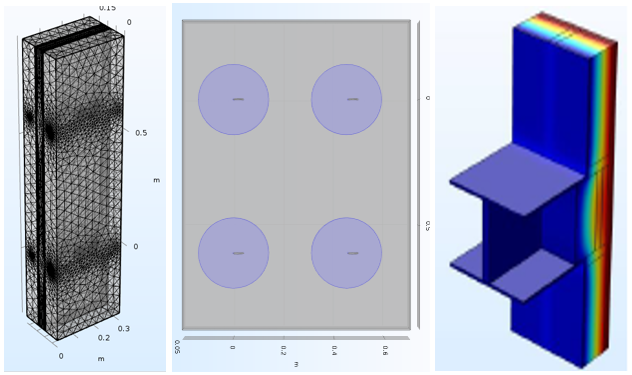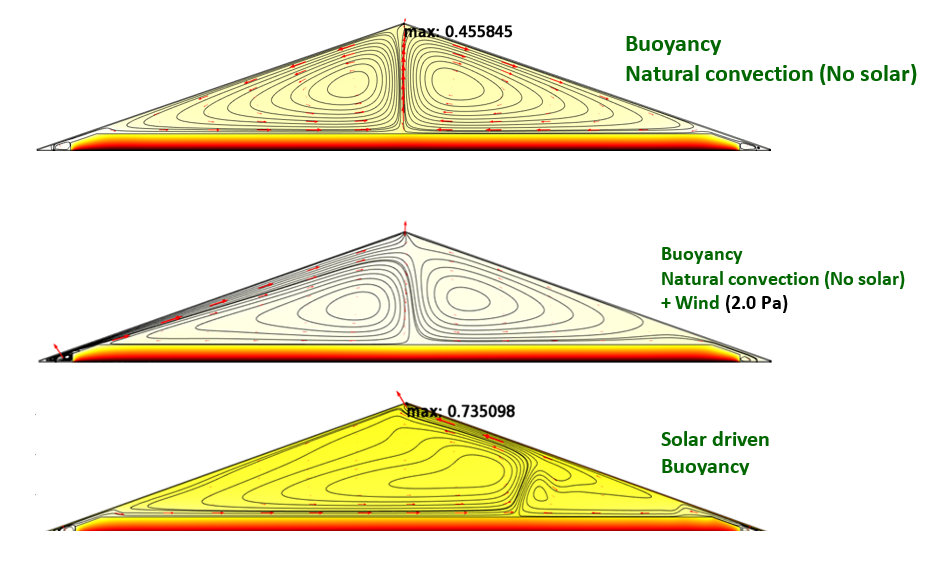Building failures remain significant despite recent advances in building technology and adopting performance-based building codes. The effect of incorporating innovative materials or systems in the moisture management potential of a building envelope component must be evaluated before use since the durability of the building may be compromised if these technologies lead to excessive moisture accumulation within the structure. The available analytical, numerical and laboratory experimental test cases used to assess the accuracy of these models are also based on simple geometry and boundary conditions to yield one- or two-dimensional heat, air, and moisture (HAM) transfer processes. In reality, however, HAM transport is three-dimensional and involves complex airflows and convection loops in cavities, and thermal bridging at junctions such as at wall/roof, wall/window, wall/floor and other connection points. Our research focuses on investigating the long-term hygrothermal performance of building envelope components via computer modeling and experimental study. The BSCE uses a combination of computer models, experimental investigations and field monitoring to develop and study building enclosures from an energy efficiency, inhabitant comfort and durability perspective.
Experimental Studies
Utilizing the high-end research facilities available at the BSCE such as the AECGHB, the BETF, and the WBPRL, the hygrothermal performance of innovative building envelope systems are assessed. Investigations include performing industry standard tests for quality assurance as well as specialized tests to advance knowledge in heat, air, and moisture control strategies. Efforts to quantify wind-driven rain and air-leakage loads enable the team to evaluate and develop effective rain and vapour control strategies. The performance of advanced building envelope systems such as high-performance wall systems, CLT wall systems, and green roofs are investigated.

Preparation of test panels for field exposure experiments

Preparation of test panels for field exposure experiments
Numerical Studies
The BSCE utilizes a combination of commercial and proprietary computer modelling programs. Among these are hygrothermal models and computational fluid dynamics (CFD) models, which play a pivotal role in evaluating the long-term hygrothermal performance and microclimate of the building envelope. The simulation models, which are validation using controlled experimental and field data gathered from our dedicated research facilities, are employed to assess and the hygrothermal performance and optimize the envelope design across various climate conditions, envelope assembly materials, and layer configurations.






